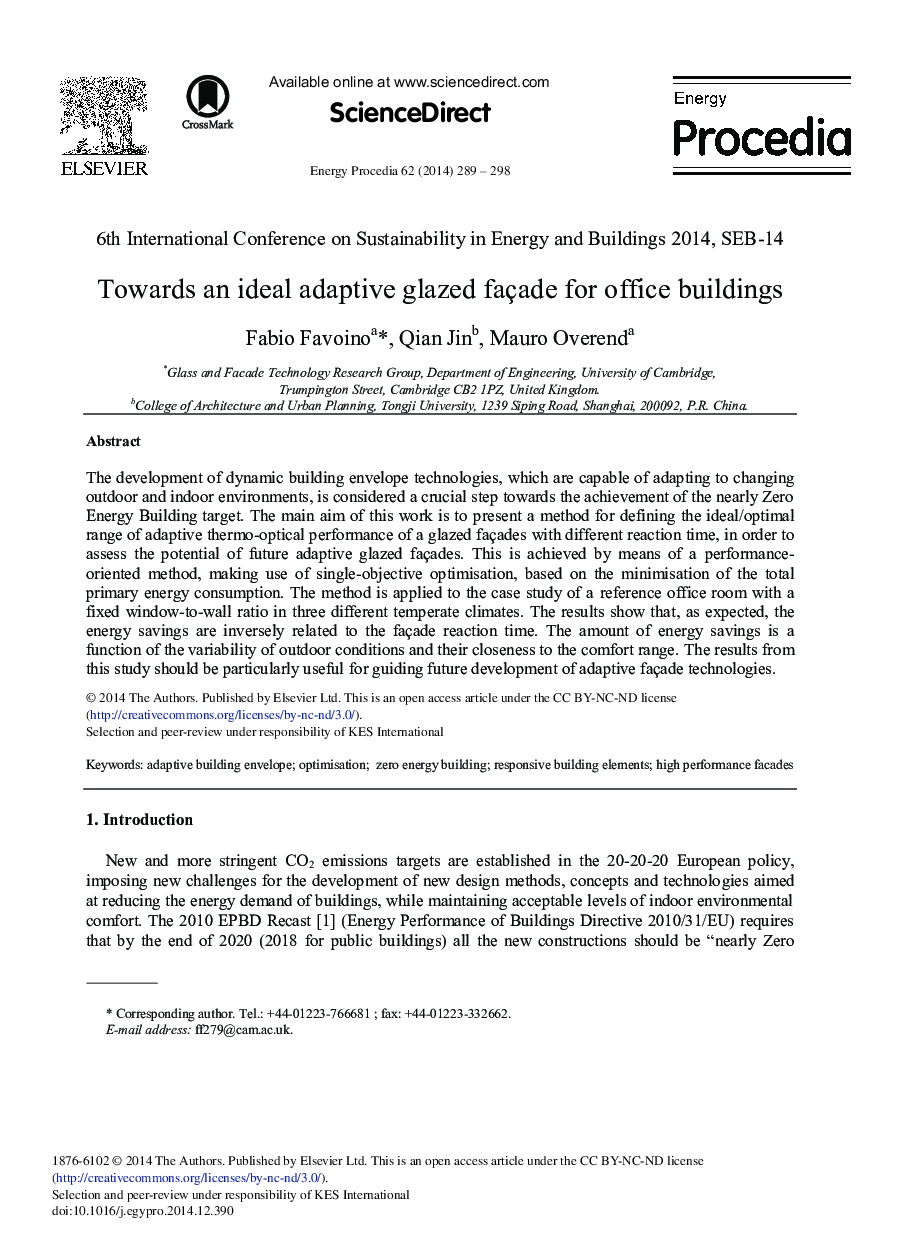| Article ID | Journal | Published Year | Pages | File Type |
|---|---|---|---|---|
| 1510115 | Energy Procedia | 2014 | 10 Pages |
The development of dynamic building envelope technologies, which are capable of adapting to changing outdoor and indoor environments, is considered a crucial step towards the achievement of the nearly Zero Energy Building target. The main aim of this work is to present a method for defining the ideal/optimal range of adaptive thermo-optical performance of a glazed façades with different reaction time, in order to assess the potential of future adaptive glazed façades. This is achieved by means of a performance-oriented method, making use of single-objective optimisation, based on the minimisation of the total primary energy consumption. The method is applied to the case study of a reference office room with a fixed window-to-wall ratio in three different temperate climates. The results show that, as expected, the energy savings are inversely related to the façade reaction time. The amount of energy savings is a function of the variability of outdoor conditions and their closeness to the comfort range. The results from this study should be particularly useful for guiding future development of adaptive façade technologies.
